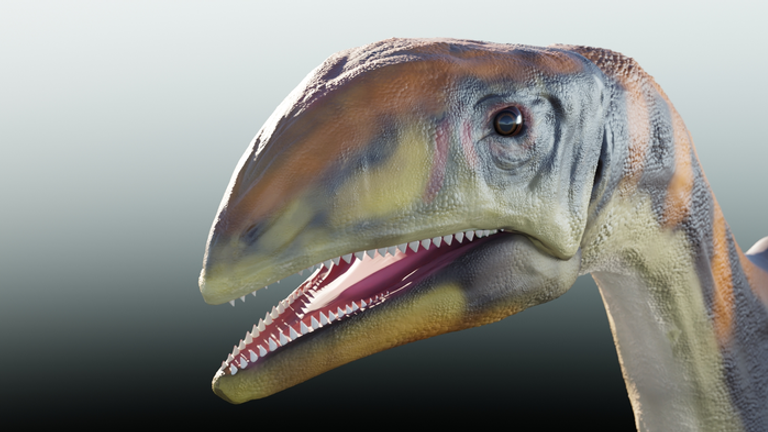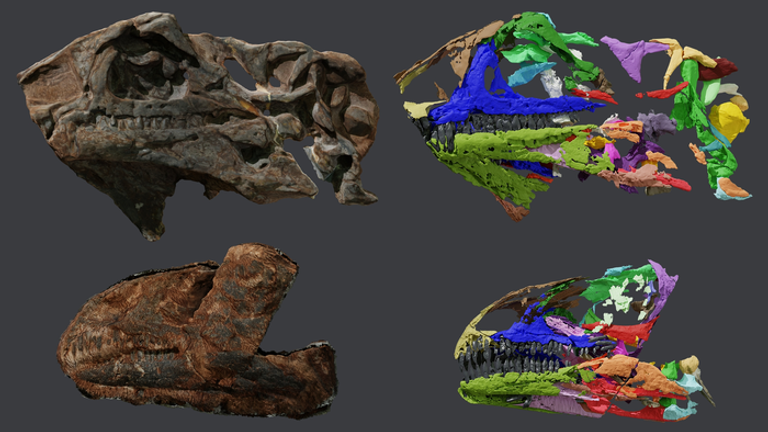'Cold Bone' dinosaur that lived 214 million years ago discovered on Greenland
The first remains of the dinosaur, two well-preserved skulls, were unearthed in 1994 but it was not clear at that time that they belonged to an entirely new species.
Tuesday 9 November 2021 10:58, UK
Scientists have discovered the first species of dinosaur that lived on Greenland 214 million years ago, and named it "Cold Bone".
The animal, known as Issi Saaneq in the native Inuit language, is a medium-sized herbivore with a long neck and was a predecessor to the sauropods such as Brachiosaurus, the largest land animals ever.
The first remains of the dinosaur, two well-preserved skulls, were unearthed in 1994 but it was not clear at that time that they belonged to an entirely new species.
An international team of researchers from Portugal, Denmark and Germany, including the Martin Luther University Halle-Wittenberg (MLU), reported the discovery in the journal Diversity.
When it was alive, during the late Triassic Period, the supercontinent Pangaea was breaking apart and the Atlantic Ocean was beginning to form.
"At the time, the Earth was experiencing climate changes that enabled the first plant-eating dinosaurs to reach Europe and beyond," explained Professor Lars Clemmensen from the University of Copenhagen.
The team performed a micro-CT scan of the bones which had been unearthed, enabling them to create digital 3D models of the internal structures and the bones still covered by sediment.
"The anatomy of the two skulls is unique in many respects, for example in the shape and proportions of the bones. These specimens certainly belong to a new species," said the lead author Victor Beccari, who carried out the analyses at NOVA University Lisbon.
According to the scientists, the two skulls belonged to a juvenile and an almost adult individual.
The new Greenlandic dinosaur differs from all other sauropods discovered so far, but the researchers said it does share some similarities with dinosaurs found in Brazil.
According to the academics, these three species form a group called plateosaurids, "relatively graceful bipeds that reached lengths of 3 to 10 metres".
The researchers add that once the scientific work is completed, the fossils will be transferred to the Natural History Museum of Denmark.




